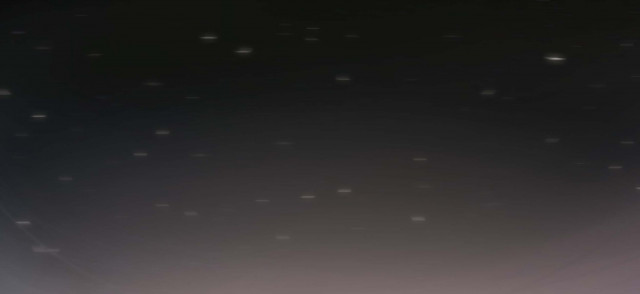A sky without stars to wish upon
'Light pollution' has deprived Lahore of starry nights.

The city’s sky has been ‘losing stars’ owing to the illumination of the night sky. The phenomenon better known as ‘light pollution’ – caused by the scattering of artificial lights across the sky – has deprived Lahore of starry nights. Rafay Alam, an environmental lawyer, said, “We cannot see stars at night in Lahore anymore because of artificial lights. The lights which point skywards should be banned. They have deprived us of our right of looking at a starry sky.”
Light pollution causes a lot of nuisance to astronomers since astronomy is a photon-based study and the lack of starlight affects their work.
Umair Asim, Lahore Astronomical Society’s general secretary and a member of the executive board of Khwarizmi Science Society is the only one in the city who measures the Lahore night sky quality.
“We measure the night sky’s brightness quantitatively with a device known as Sky Quality Meter (SQM).” The unit used is magnitude per arc square second.
According to Umair, “The average night sky of Lahore is about 17.50 magnitude per arc square second, which describes a very bright sky. The unpolluted night sky goes up to more than 22 magnitudes per arc square second. The best night sky of this year, in Lahore, was the night of April 12 at 03:00 am when the SQM showed 18.43 magnitude per arc square second. Our own galaxy, the Milky Way, was visible that night from Lahore.”
The reading last night was 16.43 magnitudes per arc square second, which translates into 2.58 NELM (Naked Eye Limiting Magnitude) or a very bad sky.
Hassan Ali, a geographic information systems (GIS) analyst and biologist, working with the World Wide Fund for Nature (WWF) said, “The hormonal system of urban birds has been adversely affected by artificial lights at night. Their breeding habits have changed dramatically from their natural habits. Nocturnal birds breed at night but all the artificial night lights have shortened their breeding time. The birds that used to go back to their nests around 6 pm or 7 pm now fly around till midnight. Some species, like the porcupine, have vanished from Lahore altogether as a result of light pollution.”
According to WWF, both nocturnal (night cycle) and diurnal (day cycle) animals are facing problems, especially in urban areas. Mortalities from collisions with lit buildings and towers add to the troubles.
A study that lists the adverse effects of light pollution states, “Animals and plants live by a rhythm which is attuned to our planet’s 24-hour cycle. Light pollution disrupts the natural age-old behaviours of humans and wildlife. Infants exposed to constant light develop circadian rhythms slowly, don’t sleep through the night and do not gain weight at a healthy rate. Wildlife goes through behavioural changes in migration, sleep, flowering and reproduction, mating and finding food which is determined by the length of day or nighttime. Constant exposure to the light causes the creation of radical cell cycles and decreases melanin level. Melatonin, a hormone that regulates sleep cycles also has some antioxidant properties. Exposure to constant artificial lights causes melatonin levels to drop and with the disturbance in estrogen levels, the risk of tumors is increased.”
Recently a German company patented ‘nocturnal milk’ – obtained from cows milked between 2 am and 4 am – that has melatonin levels 25 times higher than in normal milk to help cure insomnia.
Published in The Express Tribune, October 21st, 2010.



















COMMENTS
Comments are moderated and generally will be posted if they are on-topic and not abusive.
For more information, please see our Comments FAQ